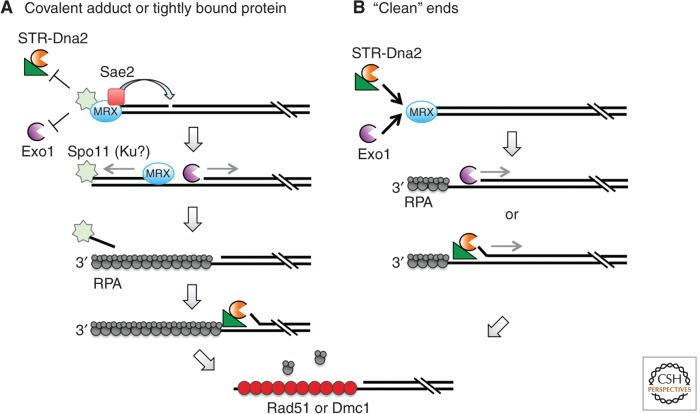Figure 3.
End processing in eukaryotes. (A) Resection of meiotic DSBs involves MRX- and Sae2-dependent incision of the 5′ strand ∼270 nt internal to the Spo11-bound end. MRX and Exo1 degrade bidirectionally from the nick to generate an ssDNA tail of ∼800 nt, and Spo11 is released from ends with a short (15- to 40-nt) oligonucleotide attached. The resulting ssDNA is bound by RPA, which is rapidly replaced by Rad51 and Dmc1 to promote strand invasion. In the absence of Dmc1, STR and Dna2 carry out more extensive end processing. This model could also apply to resection of DSBs blocked by a covalent adduct, or tightly bound protein such as Ku, in vegetatively dividing cells. (B) Resection of ends with no covalent modification (e.g., ends produced by the HO and I-SceI endonucleases) can initiate directly by STR-Dna2 or Exo1 via MRX recruitment. The two extensive resection mechanisms appear to function independently and redundantly at endonuclease-induced DSBs.

